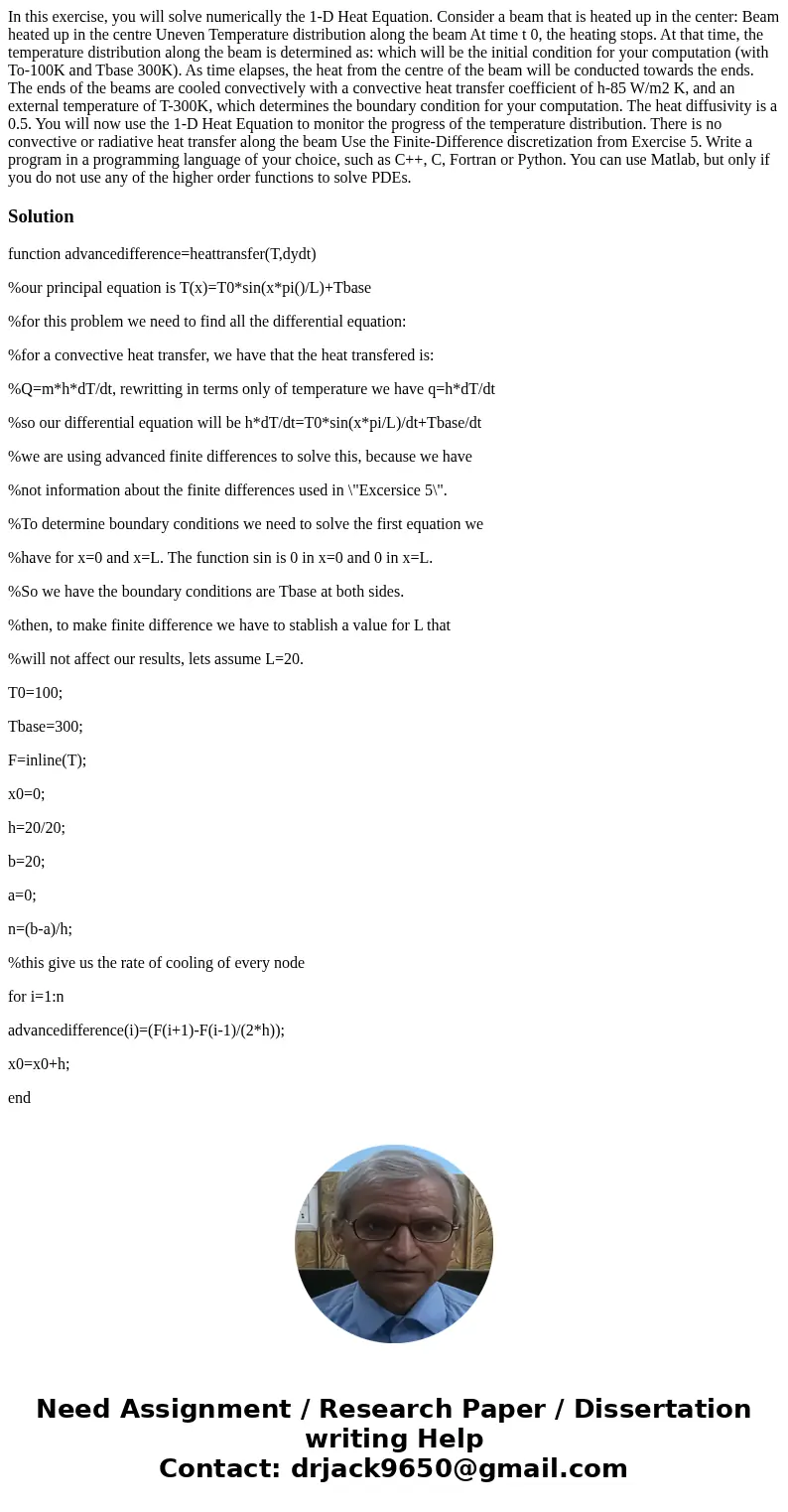In this exercise you will solve numerically the 1D Heat Equa
Solution
function advancedifference=heattransfer(T,dydt)
%our principal equation is T(x)=T0*sin(x*pi()/L)+Tbase
%for this problem we need to find all the differential equation:
%for a convective heat transfer, we have that the heat transfered is:
%Q=m*h*dT/dt, rewritting in terms only of temperature we have q=h*dT/dt
%so our differential equation will be h*dT/dt=T0*sin(x*pi/L)/dt+Tbase/dt
%we are using advanced finite differences to solve this, because we have
%not information about the finite differences used in \"Excersice 5\".
%To determine boundary conditions we need to solve the first equation we
%have for x=0 and x=L. The function sin is 0 in x=0 and 0 in x=L.
%So we have the boundary conditions are Tbase at both sides.
%then, to make finite difference we have to stablish a value for L that
%will not affect our results, lets assume L=20.
T0=100;
Tbase=300;
F=inline(T);
x0=0;
h=20/20;
b=20;
a=0;
n=(b-a)/h;
%this give us the rate of cooling of every node
for i=1:n
advancedifference(i)=(F(i+1)-F(i-1)/(2*h));
x0=x0+h;
end
advancedifference
%for L/2 we have the following equation
t=0.5;
F=inline(dydt);
a=0;
b=1;
n=(b-a)/t;
x=a:h:b;
y0=300;
t0=0;
for i=1:n
k1=F(t0);
k2=F(t0+0.5*h);
k3=F(t0+0.5*h);
k4=F(t0+h);
y(i+1)=y0+(1/6)*(k1+2*k2+2*k3+k4)*h;
t0=t0+h;
end
y;
plot(y);


 Homework Sourse
Homework Sourse